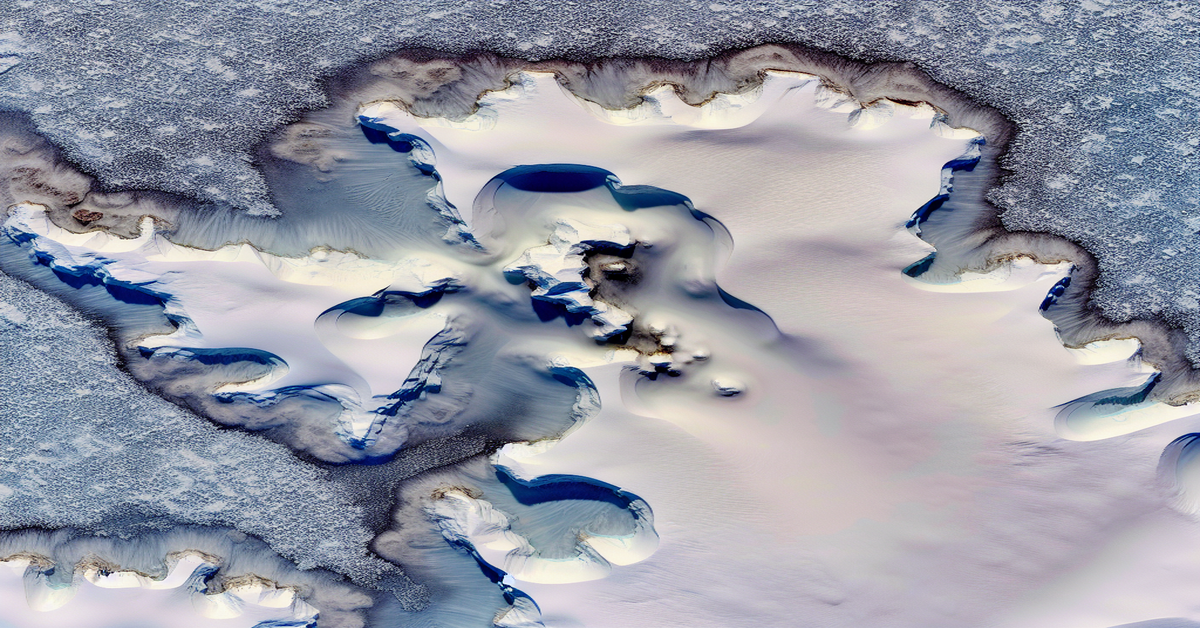The Mysterious Face of Antarctica: A Google Maps Discovery
In the vast expanse of Antarctica’s icy wilderness, a peculiar discovery has captured the attention of people around the world. A keen-eyed individual, while exploring the frozen continent through Google Maps, stumbled upon an intriguing formation that bears an uncanny resemblance to a human face. This mysterious “face” has sparked a wave of speculation and curiosity, leaving many wondering about its origins and significance.
An Unexpected Find
The discovery was made by a Google Maps user who was virtually navigating the remote landscapes of Antarctica. As they zoomed in on the satellite imagery, they noticed a striking pattern etched into the snow and ice. The formation appeared to have distinct features reminiscent of a human face, with what seemed to be eyes, a nose, and a mouth.
News of this peculiar find quickly spread across social media platforms and news outlets, captivating the public’s imagination. People from all walks of life began sharing their thoughts and theories about the “face,” with some even drawing comparisons to the famous Face on Mars captured by NASA’s Viking 1 orbiter in 1976.
The Power of Pareidolia
While the resemblance to a human face is indeed striking, it is important to approach this discovery with a scientific perspective. The human brain is wired to recognize familiar patterns, especially faces, in random or abstract shapes. This phenomenon, known as **pareidolia**, is a common occurrence that has led to numerous sightings of faces, animals, and other recognizable forms in clouds, rock formations, and even burnt toast.
In the case of the Antarctic “face,” it is highly likely that the formation is a result of natural geological processes combined with the human tendency to seek familiar patterns. The harsh winds, extreme temperatures, and constant shifting of ice on the continent can create a wide range of shapes and textures on the surface.
The Need for Scientific Investigation
Despite the excitement surrounding the discovery, it is crucial to emphasize that without proper scientific investigation, the true nature of the “face” remains unknown. While it is tempting to speculate and let our imaginations run wild, it is essential to approach such findings with a critical and evidence-based mindset.
**Further research and analysis by experts in geology, glaciology, and remote sensing would be necessary to determine the actual cause and characteristics of the formation**. Satellite imagery, while incredibly valuable for exploration and monitoring, has its limitations in terms of resolution and detail.
The Allure of Antarctica’s Mysteries
The discovery of the “face” in Antarctica highlights the enduring allure of the continent’s mysteries. Despite decades of scientific exploration, much of Antarctica remains largely unknown and unexplored. Its vast ice sheets, rugged mountains, and hidden valleys hold countless secrets waiting to be uncovered.
In recent years, satellite imagery and remote sensing technologies have revolutionized our understanding of Antarctica’s geography and geology. Tools like Google Maps have made it possible for people around the world to virtually explore the continent from the comfort of their own homes. These advancements have not only facilitated scientific research but have also sparked public interest and engagement in the wonders of Antarctica.
Engaging the Public in Scientific Curiosity
Discoveries like the Antarctic “face” serve as a reminder of the importance of engaging the public in scientific curiosity and exploration. While it is crucial to approach such findings with a critical eye, the widespread interest generated by this discovery presents an opportunity to educate and inspire people about the wonders of our planet.
By fostering a sense of curiosity and encouraging scientific literacy, we can empower individuals to actively participate in the exploration and understanding of the world around us. **Through responsible sharing of information, open discussions, and collaboration between scientists and the public, we can work towards unraveling the mysteries that captivate our imagination**.
Conclusion
The mysterious “face” spotted on the surface of Antarctica through Google Maps has captured the attention of people worldwide. While the resemblance to a human face is intriguing, it is important to approach this discovery with a scientific mindset and avoid jumping to conclusions without proper investigation.
As we continue to explore and study the wonders of Antarctica, both through satellite imagery and on-the-ground research, we may uncover more fascinating formations and phenomena that challenge our understanding of the continent. By embracing our curiosity, supporting scientific inquiry, and engaging in responsible discussions, we can unlock the secrets hidden within Antarctica’s icy expanse and deepen our appreciation for the incredible world we inhabit.
#AntarcticaMystery #GoogleMapsDiscovery #PareidoliaInAction
-> Original article and inspiration provided by Marca.com
-> Connect with one of our AI Strategists today at ReviewAgent.ai


